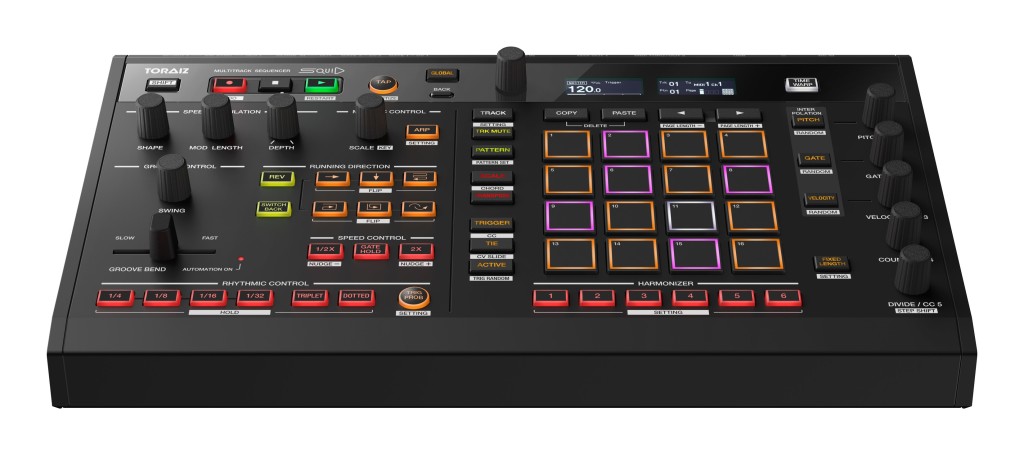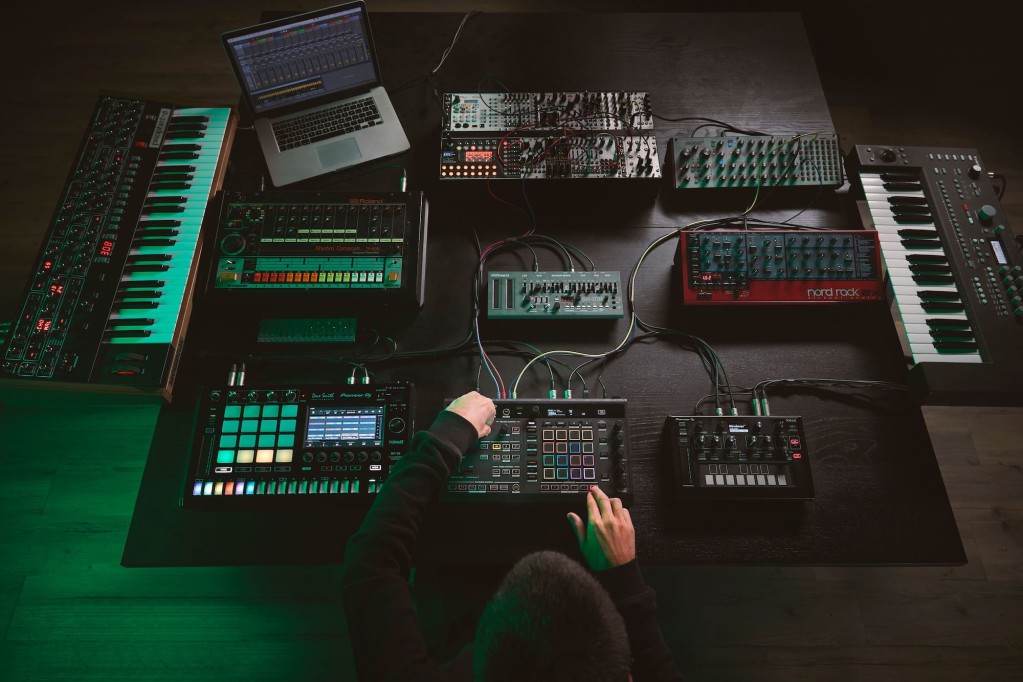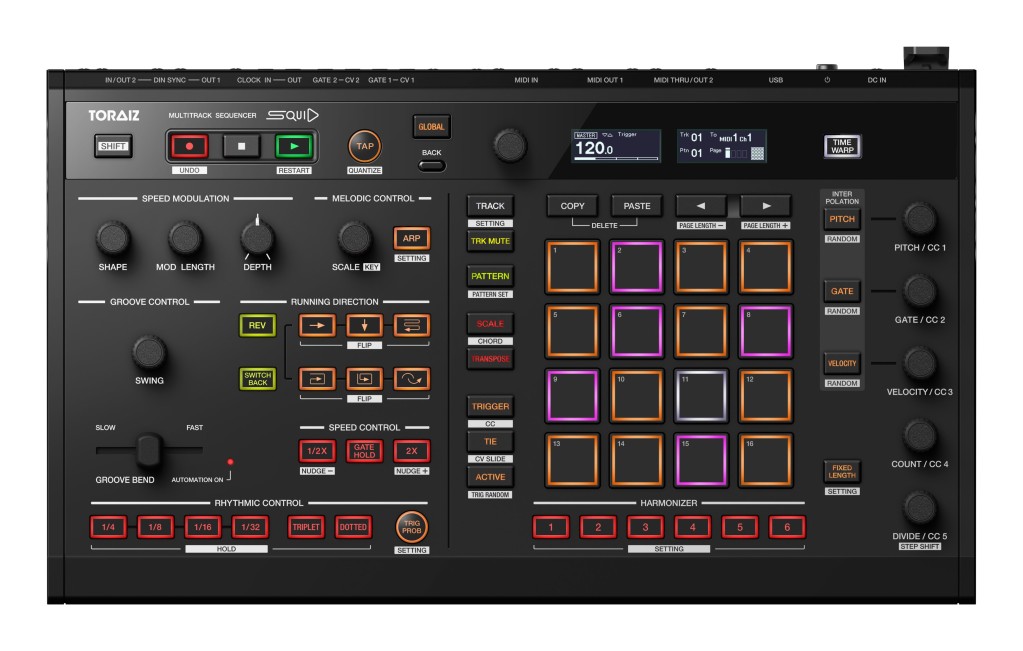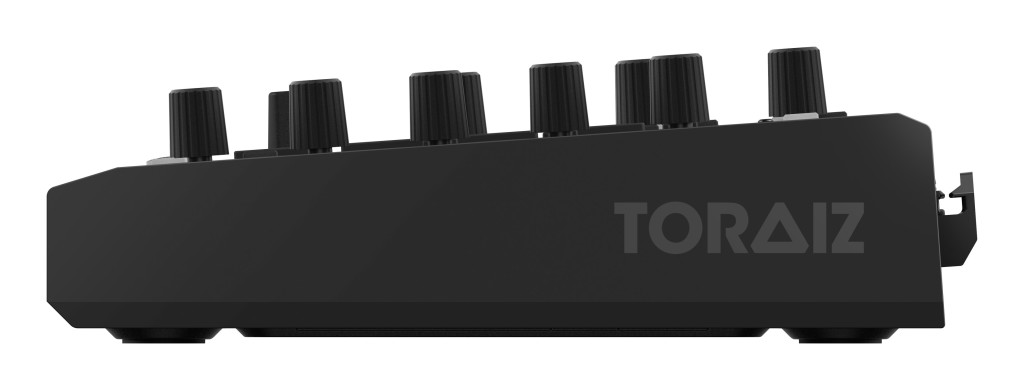Forget for a second that Pioneer is the CDJ and DJM company. Their latest TORAIZ goes a radical new direction – making what might be the biggest mainstream hardware sequencer since the MPC and Octatrack.
But a deep sequencer with MIDI and CV, for 599€ (awaiting US pricing details) – that sounds like a blockbuster.
The rise of gear for making sound has left a fairly significant hole in the market. You’ve got tons of drum machines, tons of synths, tons of grooveboxes, and then a whole black hole of semi-modular and fully-modular instruments.
But what about making, you know – a song? There aren’t so many choices for actually pulling together rhythms and melodies on all those toys. You’ve got a mishmash of internal sequencing features and devices capable of multiple tracks. But there are limited options beyond that – used Akai MPCs, the Elektron Octatrack, and Arturia BeatStep Pro being most common. The Arturia piece is cheap and cheery – and shows up astride an amazing number of fancy Eurorack rigs, prized for its simplicity. But having just dusted mine off, I find its sequencing really limited.
So here’s the surprise: the company that promises a really deep sequencer, one with elaborate rhythmic features that happily get you off the grid and bending time if you want, is … Pioneer.
The SQUID is certainly in a funny position. On one hand, it’s a natural for real gearheads and synth nerds. On the other, it’s a Pioneer product, so you can bet marketing and DJ press alike will try to say this is about “DJs getting into production” or … something. (No! DJs! Stop while you still can have a social life and, like, money in your bank account! You’ll become broke antisocial hermits like the rest of us!)
But – who cares who this is for? What it does appears to do … is a hell of a lot. And while it might actually have too many features (that will be I think the main element of any test), what’s surprising is that it isn’t a me-too sequencer. Despite the pads and step structure, Pioneer have made an effort to let musicians get off the grid and bend and warp time – so maybe drum machines can have soul again.
First, the predictable bit – it is a pad-based step sequencer, yes:
16 multicolored LED rubber pads with velocity sensitivity
Step record patterns
Live / real-time recording
Scale mode
Per-step automation recording (at least it seems that way – “parameter locks” or p-locks as known to users of other hardware)
Interpolation – this lets you set a beginning, middle, and end on steps and let the machine transition between them, a bit like creating automated envelopes
Harmonizer with up to six chords assigned to buttons
Chord mode with 18 built-in chord sets (I’m curious how customizable this is, as I’d rather the machine not make harmonies for me)
Transpose phrases on the fly
Up to five MIDI CCs on external devices
Randomizer (which covers everything, even CCs)
Pattern Set – this is interesting; it lets you lock in a combination of patterns into an arrangement, a bit like you can do with scenes in Ableton Live
And you can run sequences in different directions (bounce, reverse, whatever), as expected.
Multiple loops. Trigger probability – yeah, Pioneer are ready to take on Elektron here.
Already appealing and powerful, but it’s the real-time manipulation features that go in a new direction.
Speed modulation: look out, locked-bpm techno, because the SQUID can modulate speeds via six waveform shapes (triangle, sawtooth – please tell me there’s a random/S&H mode, too)
Groove bend: yes, there’s Swing, but there’s also “Groove Bend” which lets you use a slider to change timing. (I really hope there’s a way to optionally impact pitch, too, CDJ-style.)
Instant double-, half- speed triggers, too.
You can also shift the Scale and Arpeggiator knobs in real time, meaning… yeah, you can go super free jazz with this if you want.
There’s even an automatic mode that saves your jams even when you don’t hit record. (Ableton Live recently introduced this feature, joining a number of DAWs that have had it over the years.)
And yeah, it works with USB, MIDI, 2 sets of CV/gate, clock and DIN sync. It’s ready for your hardware from the 80s until now.
There’s even software for managing sequence patterns, projects, and MIDI clips – so you can save your work librarian style for live performances, and finish off tracks on the computer with patterns you made on the hardware.
Specs: 64 steps, 8 notes per step, 64 patterns, 128 projects.
I mean – we are sure this is a Pioneer product, right? Did someone get into our brains and make what we want?
I have a lot of questions. Step resolution seems fixed at 32nd notes, without mention of tuplets or other rhythms. I don’t see a listing for ppq resolution (the timing resolution of the sequencer). Performance reliability is something to test. Pioneer talks polyrhythms but I have some questions there.
But – wow. Yes. Let’s test this. Pioneer have so far given us some strange and mostly expensive “producer” devices lately, but this is different. This looks like it has the first shot of being the Pioneer gear every producer wants to buy – not just the Pioneer gear you use when you show up at the club. I can’t wait to get my hands on this so we can share with you what it does and how it might (or might not) fit your needs.
Obligatory promo video. Uh… someone stole Native Instruments’ typography and sci-fi light effects. But no matter – Pioneer made this device before NI did. (Okay, I’m buying the next round of beers in Kreuzberg after that comment, sorry, but it had to be said.)
The competition? It’s boutique, for sure, but the Synthstrom Deluge is the major rival:
It’s more compact than the Pioneer. And this really comes down to whether you want a 4×4 grid with a lot of dedicated triggers, or a whole bunch of pads and the Synthstrom’s nested editing capabilities. What’s really, really nice about the Deluge is, it has an internal synth engine and even sample playback. And ironically, that makes the Deluge better suited than Pioneer’s offering to taking a live project into a DJ booth – because you don’t have to reserve an entire table full of gear just to make sounds. That said, I think making a product dedicated to sequencing does free up the designers to focus on that workflow.
There should be room for both in the market; the workflow is very different, even apart from Synthstrom’s internal sound engine.
I feel bad I haven’t given the Deluge more time on CDM, so – now, no more excuses, I’ll get both these units in for a proper test.
Squarp Pyramid is also at the top of the pile as far as dedicated sequencers:
All product details:
https://www.pioneerdj.com/en-us/product/production/toraiz-squid/black/overview/
I’m a child of the 80s, but every time Pioneer writes that this is “the heartbeat of your studio,” I think of old Chevrolet “heartbeat of America” ads. Is that just me? Okay, it’s just me.
https://www.youtube.com/watch?v=OJqxYutz_Lc




